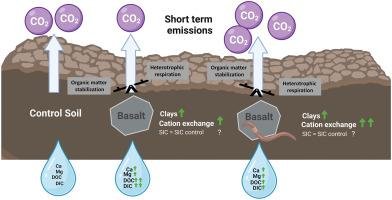
You might wonder how something so small can have such a big effect. Think of earthworms as nature’s recycling team. They break down organic matter—like fallen leaves and dead plants—turning it into nutrient-rich soil. This process doesn’t just feed the plants; it also locks away carbon that would otherwise contribute to climate change. So, let’s dig a little deeper into how earthworms contribute to carbon sequestration and why that matters for our planet.
What is Carbon Sequestration?
To understand the role of earthworms, it’s essential to grasp what carbon sequestration really means. In simple terms, carbon sequestration is the long-term storage of carbon dioxide (CO2) in soils, forests, and oceans. When carbon is sequestered, it’s removed from the atmosphere, helping to combat global warming.
Think about the carbon cycle as a big, interconnected web. Plants absorb CO2 during photosynthesis, and when they die, that carbon can return to the atmosphere if not correctly managed. Here’s where earthworms come into play. They’re like nature’s custodians, ensuring that carbon stays put in the soil rather than escaping back into the air.
How Do Earthworms Contribute to Soil Health?
Earthworms are often called ecosystem engineers because of their incredible ability to transform soil. As they burrow, they aerate the earth, allowing water and nutrients to flow more freely. This not only helps plants grow but also creates a more stable environment for storing carbon.
When earthworms consume organic matter, they break it down into smaller particles. This process increases the surface area for microorganisms to thrive, resulting in a rich environment teeming with life. Healthy soil can sequester carbon much more effectively compared to poor or compacted soil. You might think of it like a sponge that’s become saturated and can hold even more water—rich, loose soil can hold onto carbon for the long haul.
The Effect of Earthworm Activity on Carbon Storage
So, how exactly do earthworms impact carbon storage? Their activity plays a vital role in transforming organic matter into stable forms of carbon, which can remain locked in the soil for years. As they digest and excrete organic matter, they create nutrient-rich casts. These casts are not only beneficial for plants but are also packed with stable carbon.
Interestingly, research shows that earthworm populations can enhance soil organic carbon levels by up to 25%. That’s a significant boost! When you think about the vast number of earthworms in a typical garden or field, it’s easy to see how their collective impact can be immense.
Why Earthworms Matter for Climate Change
You might be asking, “So, why do earthworms matter to me?” Well, climate change is one of the biggest challenges we face today. By facilitating carbon sequestration, earthworms help mitigate the amount of CO2 in the atmosphere, which can slow down global warming. These efforts are crucial if we want to maintain our planet’s health.
In addition to carbon storage, earthworms also improve soil structure, water retention, and nutrient cycling. In areas where soil health is declining due to erosion or contamination, encouraging earthworm populations can be a natural solution. This means healthier crops, better food security, and a stronger ecosystem—all vital for combating climate change.
Practices to Support Earthworm Populations
If you’re eager to help enhance the earthworm populations in your area, there are simple steps you can take. Here are a few practices that can create a welcoming habitat for these essential creatures:
- Avoid pesticides: Chemicals can harm earthworm populations, so try to limit their use in gardens and fields.
- Increase organic matter: Adding compost or mulch helps feed earthworms and creates a richer soil environment.
- Practice no-till farming: This method preserves soil structure and prevents disruption of earthworm habitats.
- Rotate crops: This encourages biodiversity and prevents soil depletion, giving earthworms a thriving ecosystem.
By taking these actions, you can create a healthier environment for earthworms and, by extension, contribute to their crucial role in carbon sequestration.
Common Misconceptions About Earthworms
Even though earthworms are champions of soil health, there are some myths floating around. One common misconception is that all earthworms are bad for native ecosystems. While it’s true that some non-native species can disrupt local habitats, many native earthworms are vital to maintaining balance in our soils.
Another myth is that earthworms only exist in rich, fertile areas. In reality, they can thrive in a variety of environments, including urban gardens and agricultural fields. The more we understand about earthworms, the more we can appreciate their contributions to our ecosystems and climate goals.
The role of earthworms in carbon sequestration is both fascinating and vital. These tiny engineers are more than just soil dwellers—they’re key players in the fight against climate change. By enhancing soil health and storing carbon, earthworms help create a sustainable future for our planet.
So, next time you spot a wriggly earthworm, remember its incredible power. Whether you’re gardening or farming, nurturing these creatures is a step toward preserving our environment and supporting a healthier earth. Let’s embrace earthworms and pave the way for a greener future!
